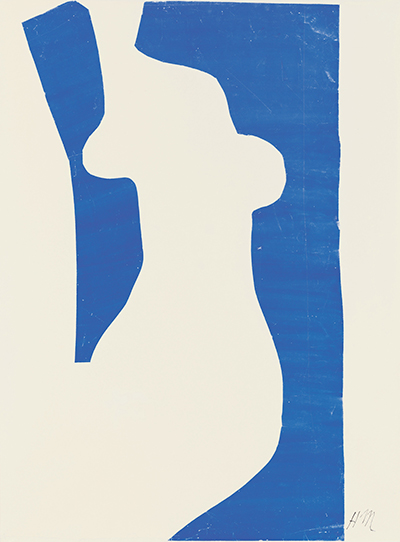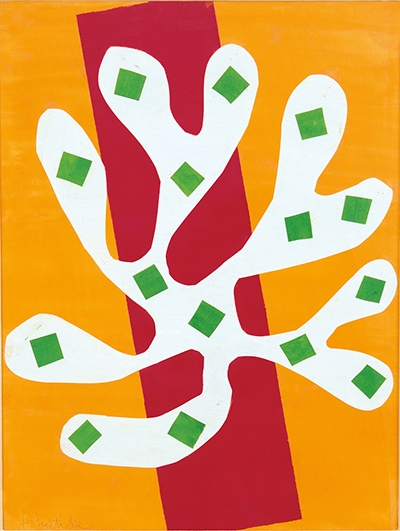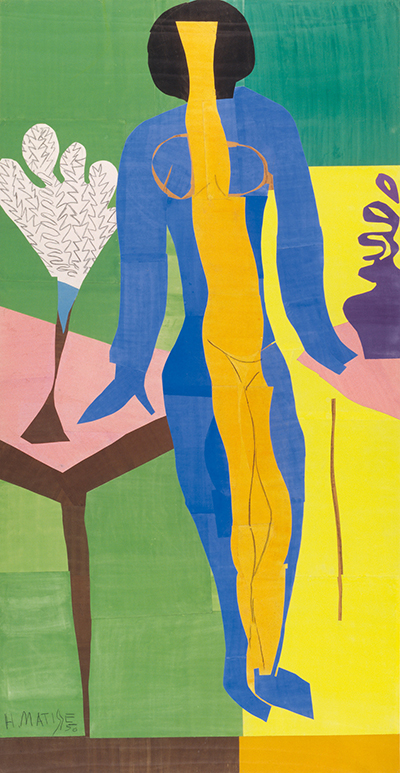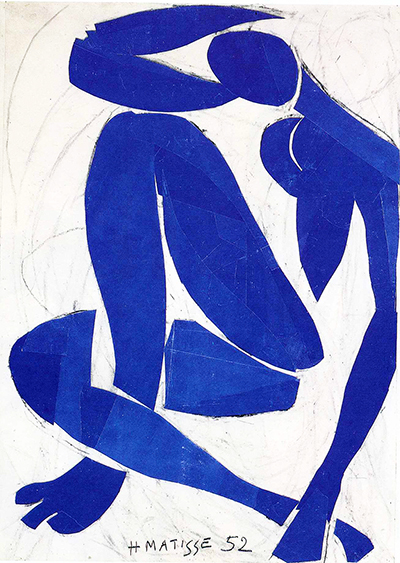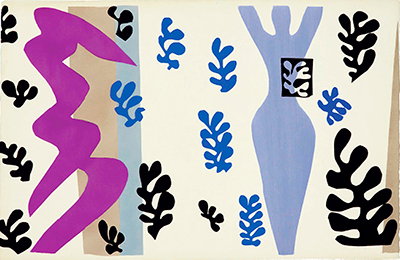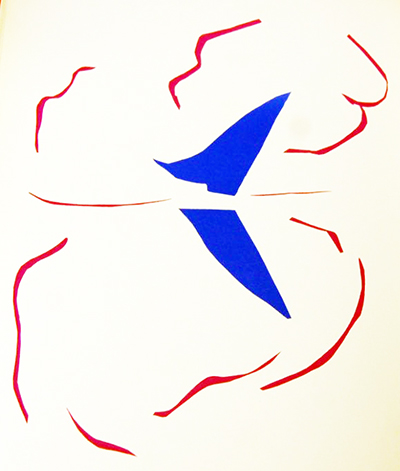Henri Matisse produced a huge collection of paper cut-outs artworks towards the end of his career and this extended spell of work helped to rejuvenate his entire oeuvre. Learn more about Matisse's cut-out paintings in this extensive section.
As the artist entered his 70's his health was starting to deteriorate. But rather than feel restricted, he adapted successfully and continued to make huge numbers of artworks. The idea of creating genuine art from paper cut-outs was entirely new, and a technique that Matisse had invented himself. As he continued down this path he realised that it was actually just an extension of his previous work, rather than an abrupt change in style. He had, for example, been moving towards greater abstraction for a number of years and this form of art provided him with the tools to simplify his work even more. In creating individual objects for each "painting", Matisse could change the arrangements as necessary without having to redraw anything. He found this to be a very flexible way of working.
The large photograph found here is of Icarus, one of Matisse's most famous cut-out artworks. One can quickly see the various elements of the scene, with each one having been individually cut from paper. The artist is likely to have moved the figure around the scene several times before deciding upon the composition that we find here. An additional advantage of this approach was the uniformity of colour. He could have single shades covering whole areas, perfect colours if you will, chosen for their high levels of luminosity. Indeed, changing colours of any item would also take just a matter of seconds. It would almost be like an illustrator sitting at a computer in the modern day and amending their work through digital software. Such technology was over a century away at that point, so Matisse was happy to make do with his own specially-created technique of cut-out paper.
Short Video Introducing Henri Matisse's Cut-Out Artworks
The video below is titled Henri Matisse A Cut Above the Rest (2013 - 2014) and provides an excellent, 30 minute, introduction to the work of Henri Matisse and his series of cut-out artworks. It was produced by the BBC to accompany an upcoming exhibition on this very same topic at the Tate in London, UK.
Matisse would describe his previous work as his "early paintings" and felt that this change in medium was a natural progression. He knew he was already on a path towards greater abstraction and that his colours choices from Fauvism could continue to develop in his cut-out pieces. Matisse is certainly not the only artist to have changed granularity across their career. Kazimir Malevich, for example, ended up going as far as producing White on White, his ultimate achievement in abstract art. Mondrian and Kandinsky also followed a similar path during their own careers. The artist was quoted as explaining how the influence of Gauguin and Van Gogh had influenced his cut out work. It was specifically their bold colours which he attempted to recreate in his own style with this new art form. Matisse himself had actually spent time in Tahiti, just as Gauguin had done, and some of his earlier memories from this trip also inspired him many years later. It was a location which seemed to leave an imprint on anyone lucky enough to visit. Additionally, Henri experienced the extraordinary light which exists in the southern part of his native France and this also helps to give artists a different viewpoint of similar objects.
Henri Matisse's Cut-Out Technique
The artist was still well enough to paint paper with single blocks of colour, normally using gouache. He would then carefully cut out shapes using a standard pair of scissors and it was at this point that his imagination took over. It was at this point that Matisse was furthest from reality, using blocks of pure colour and without any real detail other than the outlines of each object. That was frankly all that this genius needed to produce eye-catching artworks, time and time again. Matisse would not just dive straight into his cutting. He would plan the elements of his work separately in notebooks, producing endless study drawings. His figurative cut outs appeared many years after he had first started using this technique and that type of content required considerable practice in order to capture the limbs and main torso just as he wanted. He would later go onto make huge numbers of figures for various cut-out pieces, some of which are included in this page.



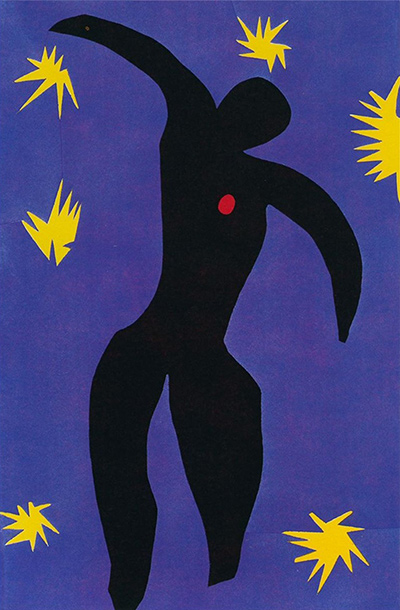
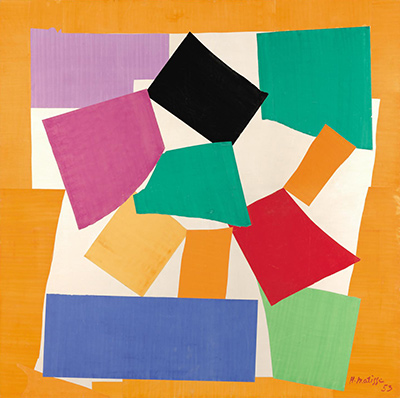
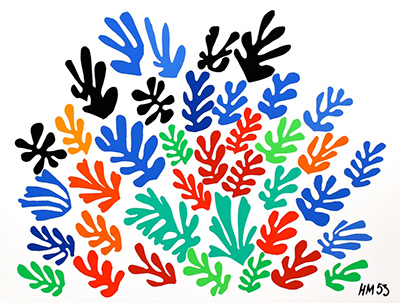
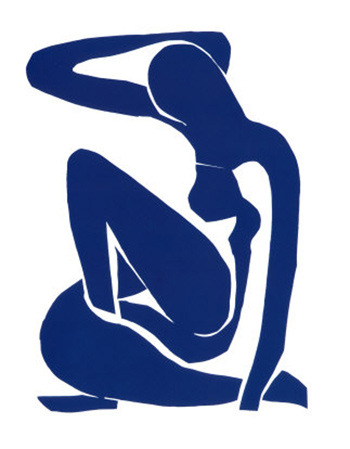
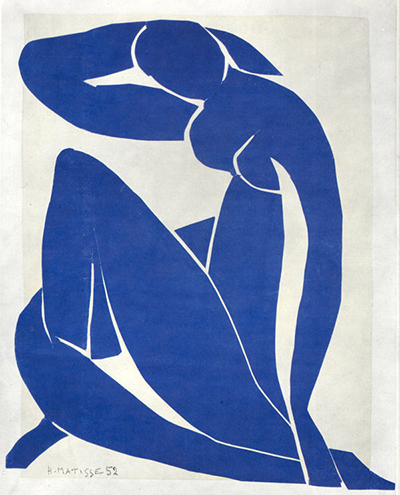
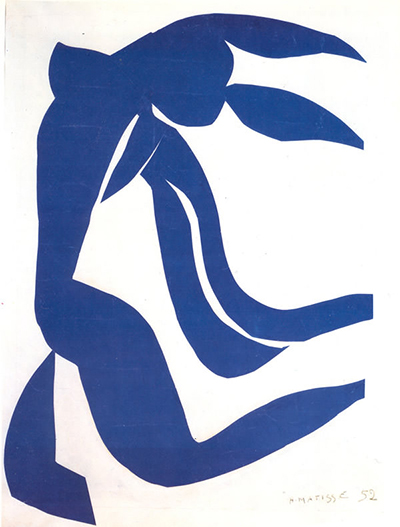
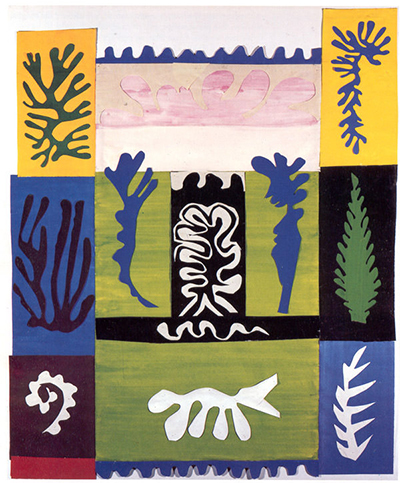
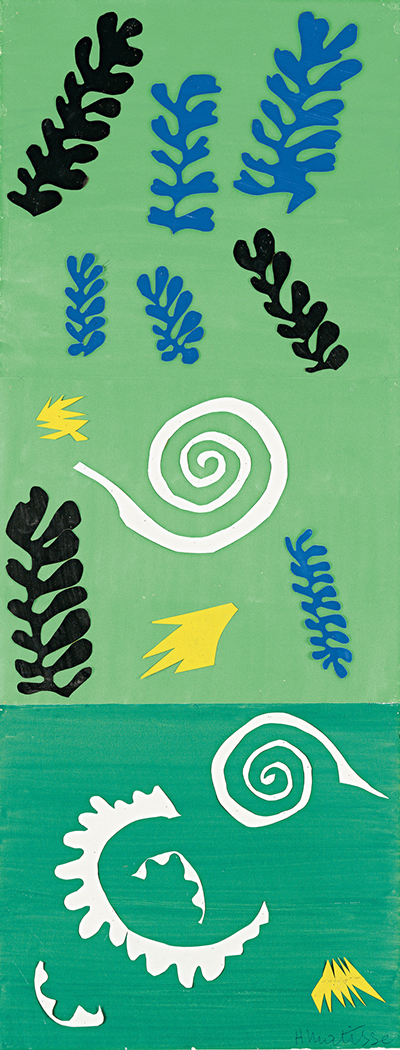
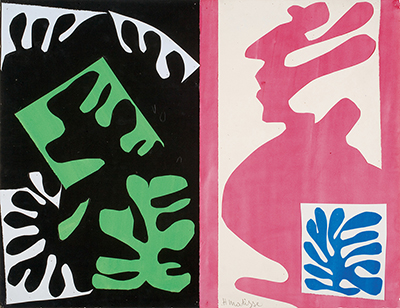
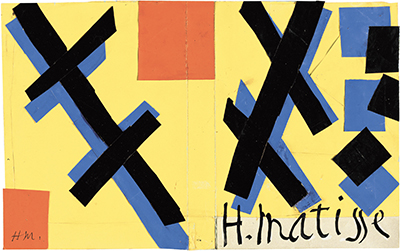
 Henri Matisse.jpg)
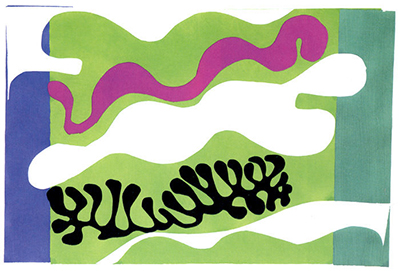
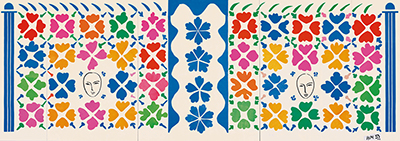
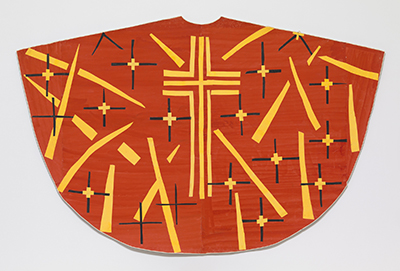
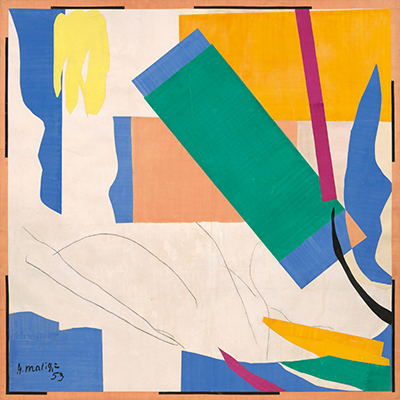
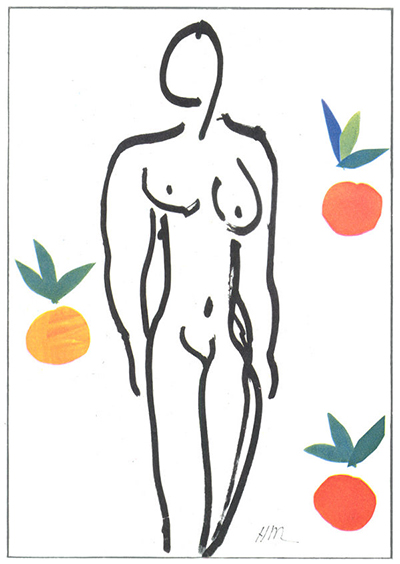
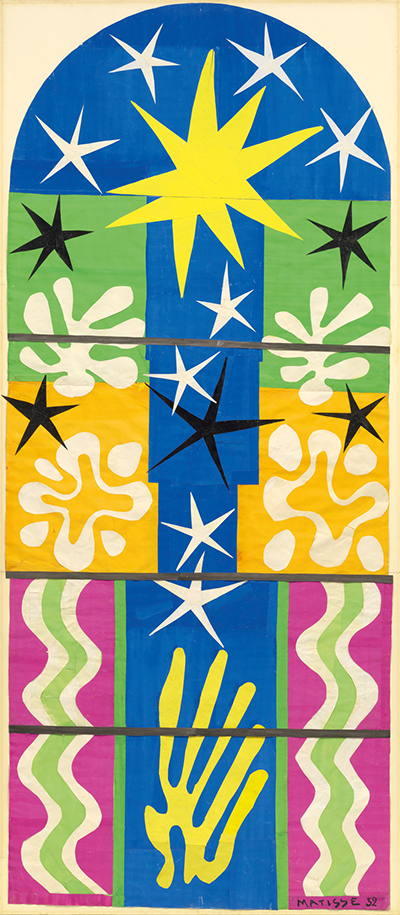
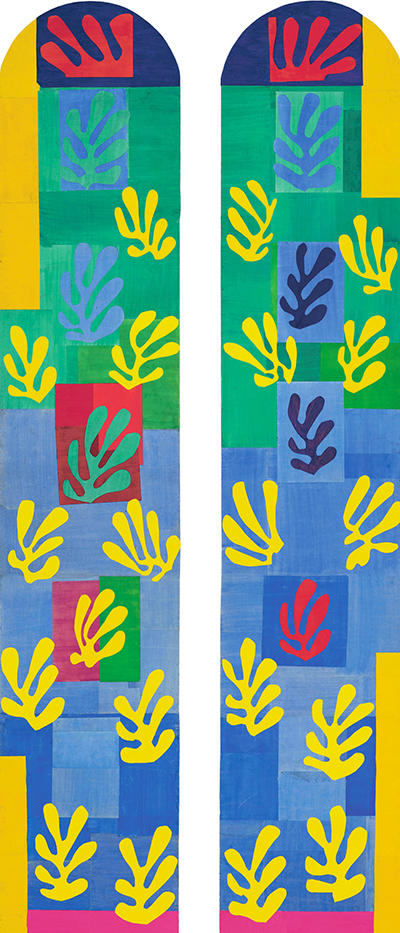
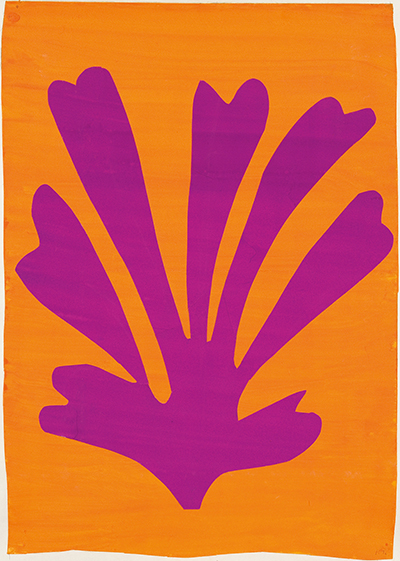
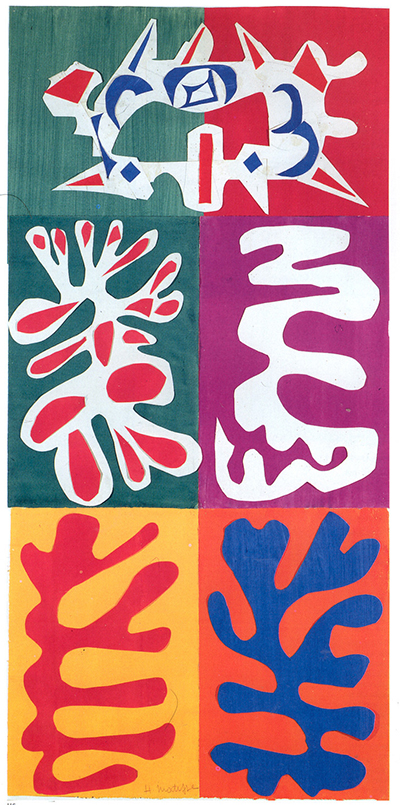
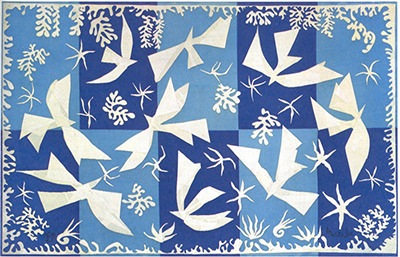
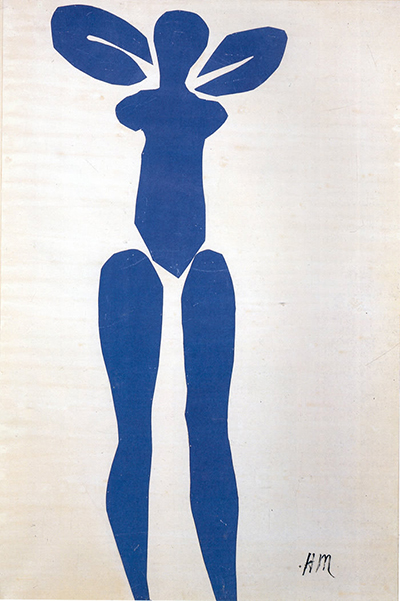
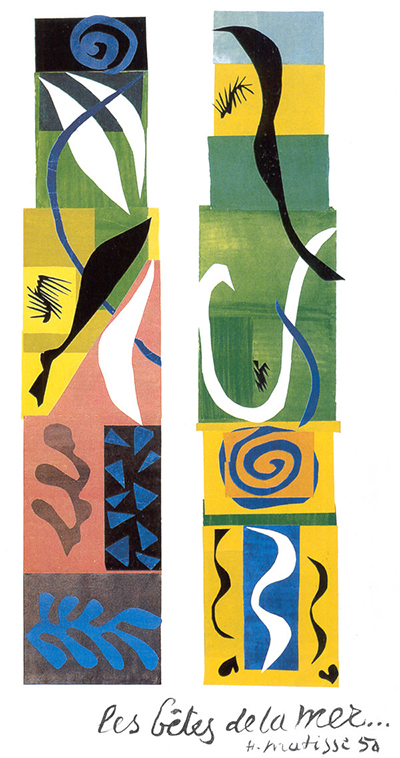
 Henri Matisse.jpg)
 Henri Matisse.jpg)
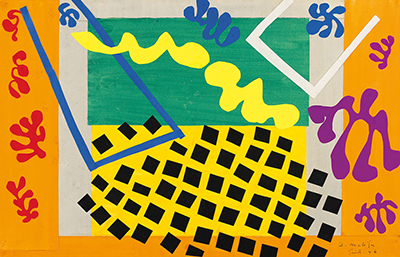
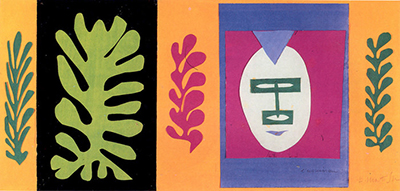
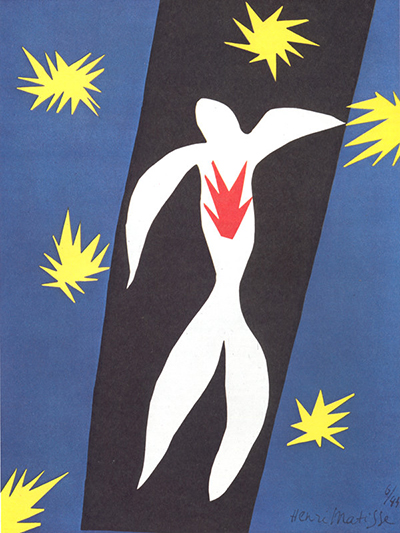
 Henri Matisse.jpg)
 Henri Matisse.jpg)
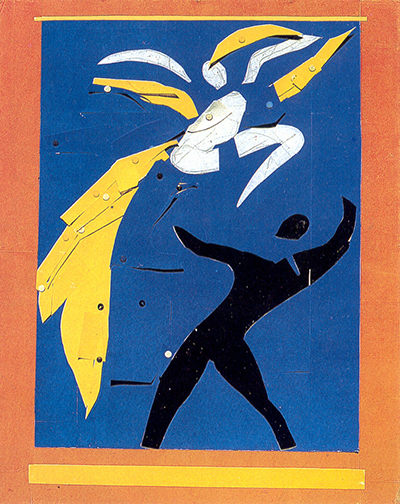
 Henri Matisse.jpg)
